TALKING SHOP JANUARY 26 2021
by Song-I Saba
Didier Haspeslagh of Didier Ltd. breaks down the true value of artist-designed jewelry
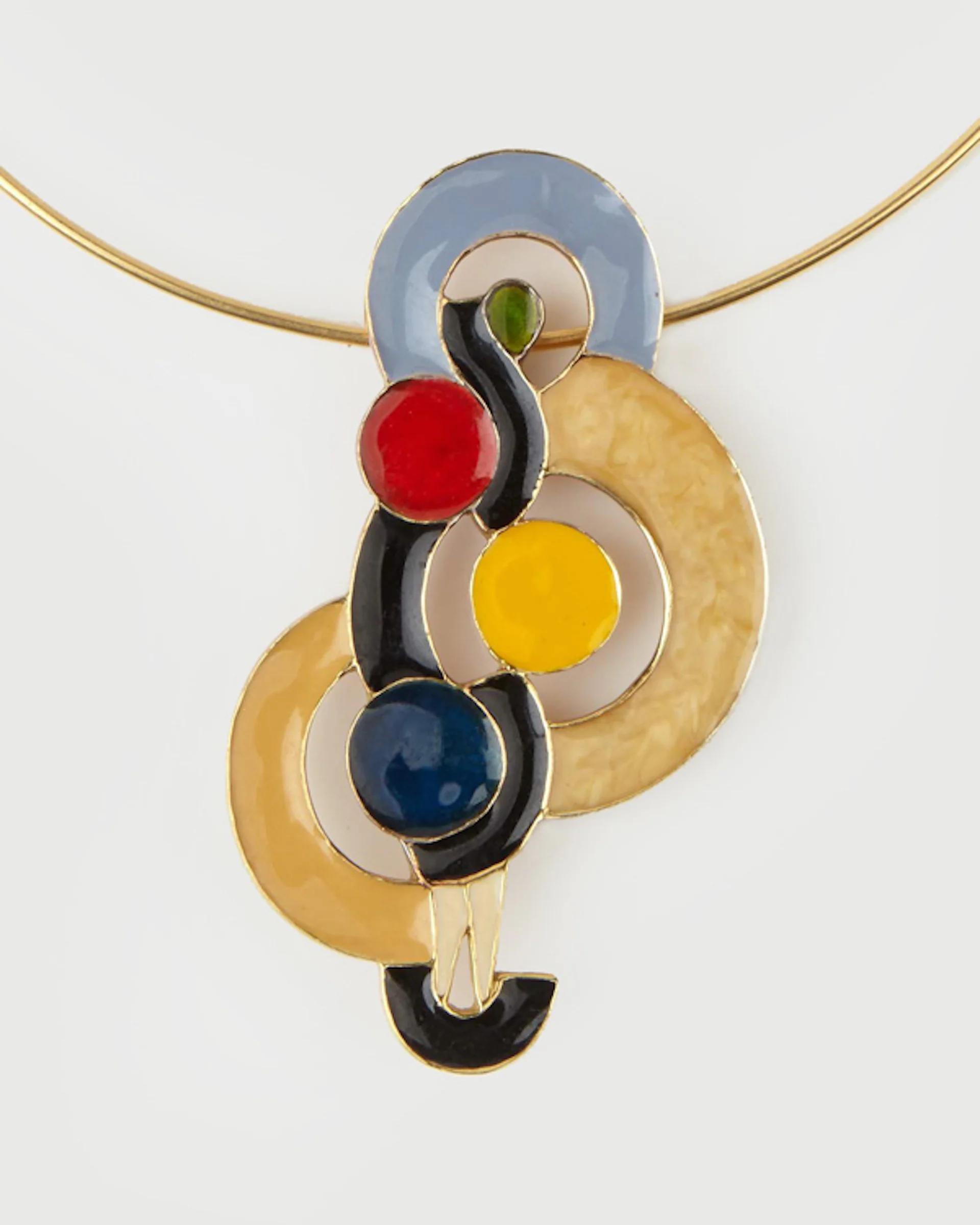
SONIA DELAUNAY/ FLAMENCO PENDANT, FOR ARTCURIAL, CIRCA 1975
Photo © Didier Ltd.
What if you could wear an original artwork by your favorite modern master on your daily commute, to a get-together with friends—or, if you’re reading this in 2021, to your living room window? Artist-designed jewelry is often thought of as portable sculpture. Through these worn pieces, artistic intention escapes the confines of the museum and gallery spaces and comes to life in the everyday world.
The value that lies in these pieces goes beyond carat count or the perennial allure of gemstones; wearable art celebrates the personal and intimate expression of their makers within the unique context of each artist’s life and career. As Alexander Calder put it, artist-designed jewelry turns the wearer into a “living work of art.”
There are a select few dealers dedicated to the lesser known—though by no means less impressive—role that jewelry plays in the oeuvre of many iconic artists of the 20th century. Martine and Didier Haspeslagh of Didier Ltd. in London are two of them. We sat down with Didier to talk about the exceptional world of collectible art jewels and the stories behind them.

ALEXANDER CALDER/ UNIQUE SILVER VERMICULAR BROOCH, 1949 | GEORGIA O’KEEFE WEARING A BROOCH BY CALDER
Right: Photographed by Bruce Weber, Photos courtesy of Didier Ltd.
Design Miami/Wearable art has a rich history and has enjoyed landmark international exhibitions since the 1940s, but for many art and design lovers the subject may still be relatively new. How did you first discover art jewelry?
Didier Haspeslagh/I began my career as an antiques dealer 40 years ago, having collected sculpture as a teenager. I found that my focus turned increasingly to pieces of a smaller scale. At first I was drawn to Arts and Crafts jewelry, which was plentiful, easy to procure, and lesser known in the early 1980s. A large number of these jewels were designed by architects, sculptors, and painters who used color and scale in ways previously unseen in Victorian jewels.
Many were designed by women too, usually in partnership with a frontman or husband, as women were not really accepted in that endeavor until the First World War. Jewelry-making was very much a man’s domain, a very traditional operation with a structure of apprentices, journeyman, and masters. In fact jewelry designed and made by women closely follows the rejection of corsets and the pursuit of liberation, not just in dress but politically too. The suffragettes had their own unique jewels with a secret code hidden in the colors green, white, violet (GWV), which signaled “Give Women Votes.”
My wife and I have never been interested in the bling factor of jewels. Gemstones left us as cold as the mere minerals that they are. Artists feel much the same way, and therefore very valuable gems and diamonds are rarely used unless commissioned specifically by a client. At best they lend a flash of color or catch the light in a desired way. But ultimately original thought combined with wonderful craftsmanship and technique made these unique and rare items very attractive to collectors like me.
DM/Central to the value of many handmade pieces by artists like Alexander Calder and Pablo Picasso is the personal relationship they had with the recipients, who often received the jewels as gifts. As you have said, it always comes back to “the story.”
DH/Beyond the intrinsic value of the metal and any incidental gemstones, more value lies in the object's story as well as the visible principles of the artist’s well known work on show. Picasso, Braque, Calder, Bertoia, and Fontana are just a handful of artists whose record-breaking canvasses and sculptures have made people reappraise other facets of their art, such as pottery and jewelry. Stories connect a wearer directly to their chosen artist. The wearer becomes a vehicle for the artwork and thus part of the artist’s intention to disseminate his or her ideas outside the confines of a gallery or museum.
One story that illustrated this is how Picasso’s For Nush necklace came about. The handmade jewel was given to Nusch Éluard by Picasso on a beach in the south of France in 1938. Picasso was in the habit of picking up debris and produced a number of jewels from bone, wood, pebbles, glass, and terracotta shards found on the seashore. Nusch and her husband Paul were very close friends of his in the late 1930s and holidayed with him for a number of years. The poet Paul Éluard had written about Picasso, and it is suspected that an affair was unfolding between Nusch and Picasso at the time. The jewel would have been part of this romance. Such Bohemian behaviour was accepted by the large group of artists that intermingled at that time. The jewels are indicative of this, as Picasso only made jewels for women that he had dalliances with, and he did make quite a few.
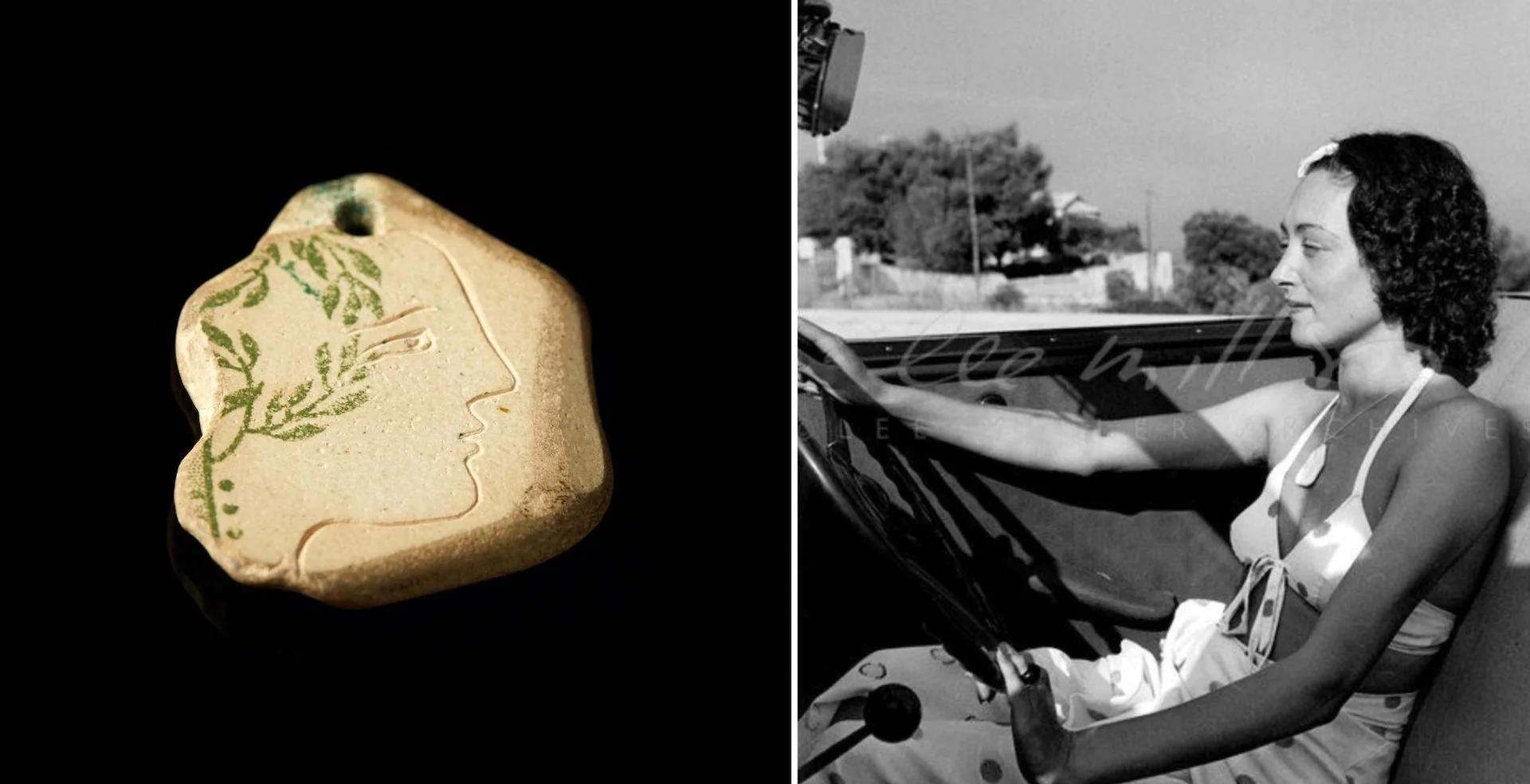
PABLO PICASSO/ FOR NUSH NECKLACE, 1938 | NUSCHKA WEARING THE NECKLACE
Right" Photographed by Lee Miller. Photos courtesy of Didier Ltd.
Another exceptional ring by Picasso came about through a bitter altercation with his mistress and muse Dora Maar. Strolling on the Pont Neuf, he lost his temper at her for exchanging one of his drawings for a ruby ring, whereupon Dora took the ring from her finger and threw it into the Seine, never to be recovered. To make amends, Picasso created an exquisite little portrait embedded in an intricate enamel ring.
The For Nush necklace and Portrait de Dora Maar ring will be exhibited alongside 15 jewels lent by Didier Ltd. to the Picasso Museum in Barcelona for a survey of his jewelry, which is set to open in May 2021.
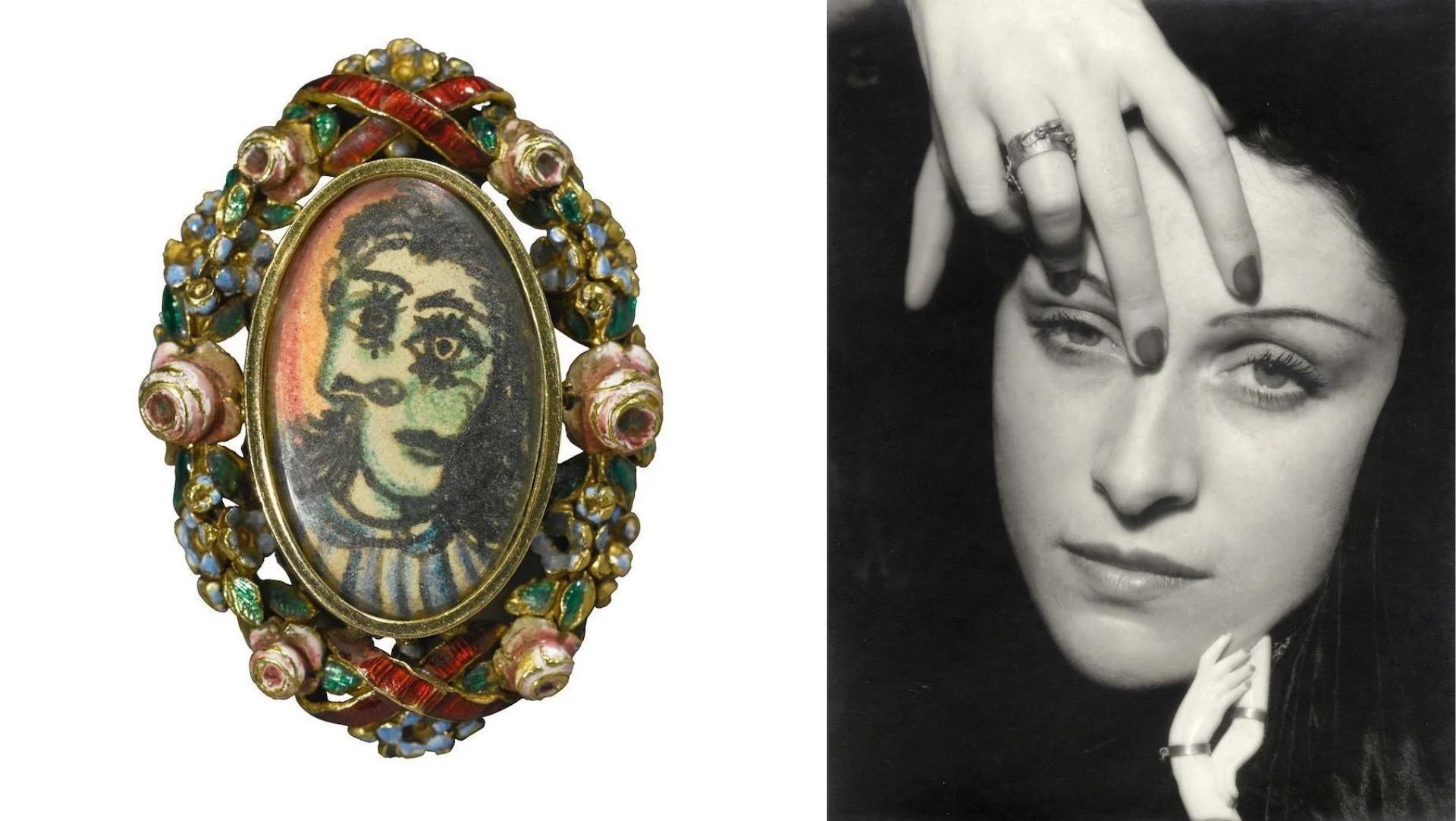
PABLO PICASSO/ PORTRAIT OF DORA MAAR RING, LATE 1930S | DORA MAAR
Right: Photographed by Man Ray. Photos courtesy of Didier Ltd.
DM/The Shackle necklace by Louise Bourgeois (created c. 1948/1999) is an exceptional piece. Could you tell us about the symbolic significance it holds in the context of her life and visual vocabulary?
DH/Bourgeois designed this necklace in the 1940s as a personal statement against the violence she had witnessed against prisoners during the Spanish Civil War (1936-39), who were restrained in shackling devices. The piece became a metaphor for the social, political, and legal constraints of women and, on a personal level, for Bourgeois’s own childhood trauma. It is no surprise that one of the only times we see Bourgeois in one of her own designs is in a photograph of her having lunch with her father, with whom she had a very contentious relationship.
As in her other works, her jewelry addresses the female condition without neglecting the allusions to desire. As a shackle, this object is a metaphor of entrapment; of the suffocation of women. In her own words: “My works are a reconstruction of the past. The past has become tangible. But at the same time they are created in order to forget the past, to defeat it, to live it in memory, and to make it possible to forget it.”
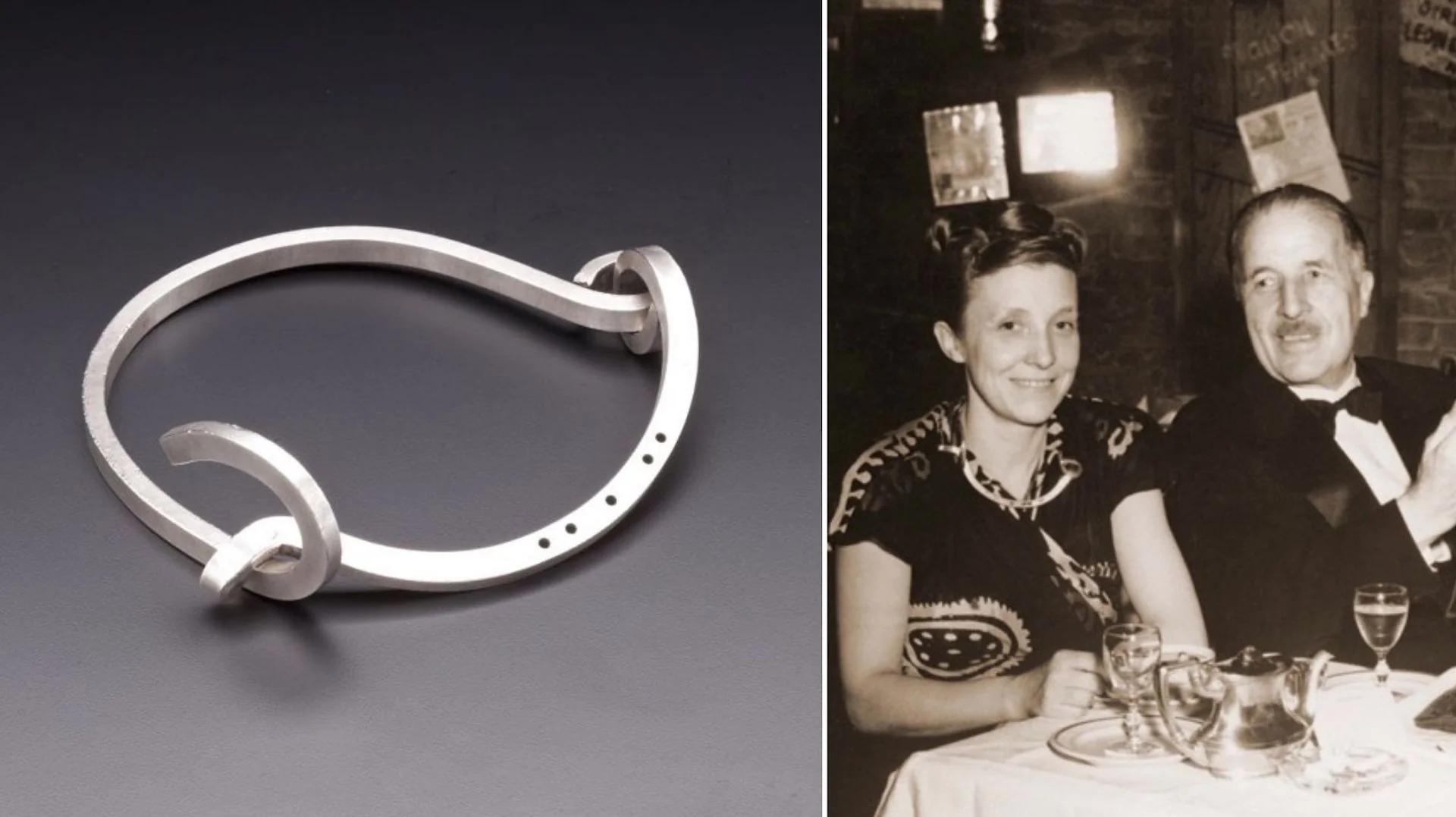
LOUISE BOURGEOIS/ SHACKLE NECKLACE, C. 1948/1999 | LOUISE BOURGEOIS WEARING THE SHACKLE NECKLACE AT LUNCH WITH HER FATHER, 1948
Photos courtesy of Didier Ltd.
DM/Can you share more about your selection process? What makes a piece of jewelry collectible in your view?
DH/Constant research into archives reveals hidden pieces and their background, and when they come up for sale, we typically already know where they were exhibited, how they fit into the career of the artist, and stories about who owned them, wore them, gifted them, etc. The more we know about a piece beforehand, the stronger we feel about acquiring it! We may also acquire a piece first and start digging later at our leisure, where our instinct is rewarded with great discoveries made in museum libraries. A great collectable art jewel enhances the wearer by bestowing an aura of intimate knowledge not unlike armor.
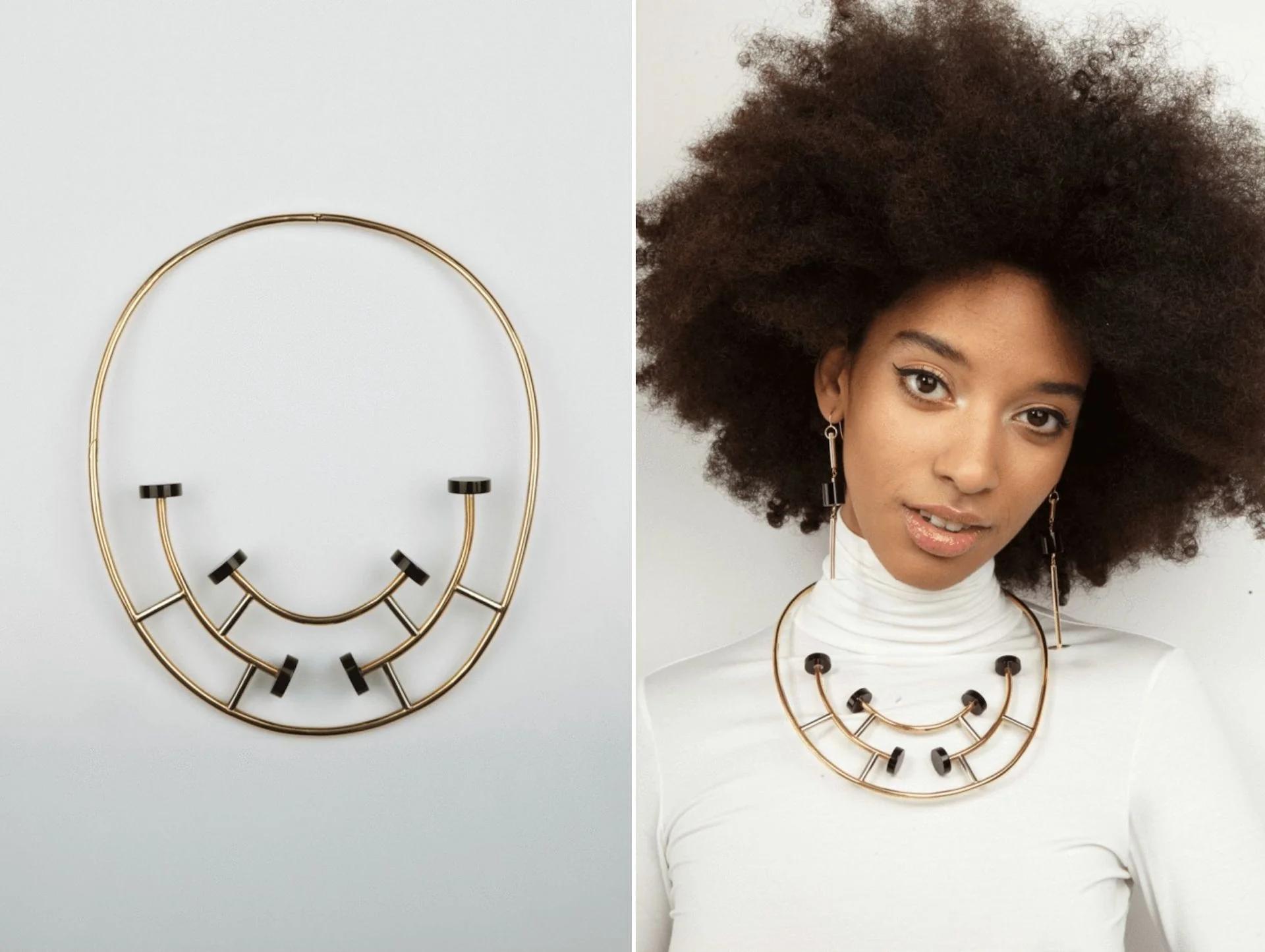
ETTORE SOTTSASS/ 18 CARAT GOLD & BLACK ONYX NECKLACE, 1984-1986. | ETTORE SOTTSASS WORN BY MODEL
Photos © Didier Ltd.
DM/In what way is the art world’s perception of jewelry by artists and sculptors changing today?
DH/It has been a slow burner but is gathering momentum as collectors and museums become aware of the hidden aspects of art jewelry, since these pieces also represent good value for collectors against other artworks. The nature of the pieces cuts out most men, as they rarely wear jewelry and typically concentrate on the other fields of art; whereas women collectors have come to the fore in the last decade or so. Of course quite a few wearable artworks were produced by women, especially the surrealists and constructivists, such as Leonor Fini and Meret Oppenheim of the former and Louise Nevelson and Nadia Khodasevich Léger of the latter, to mention a few. It has turned out to be a much larger sphere than we could have ever anticipated. ◆
Wearable art from the Didier Ltd. collection can be found in the Design Miami/ Shop here.


